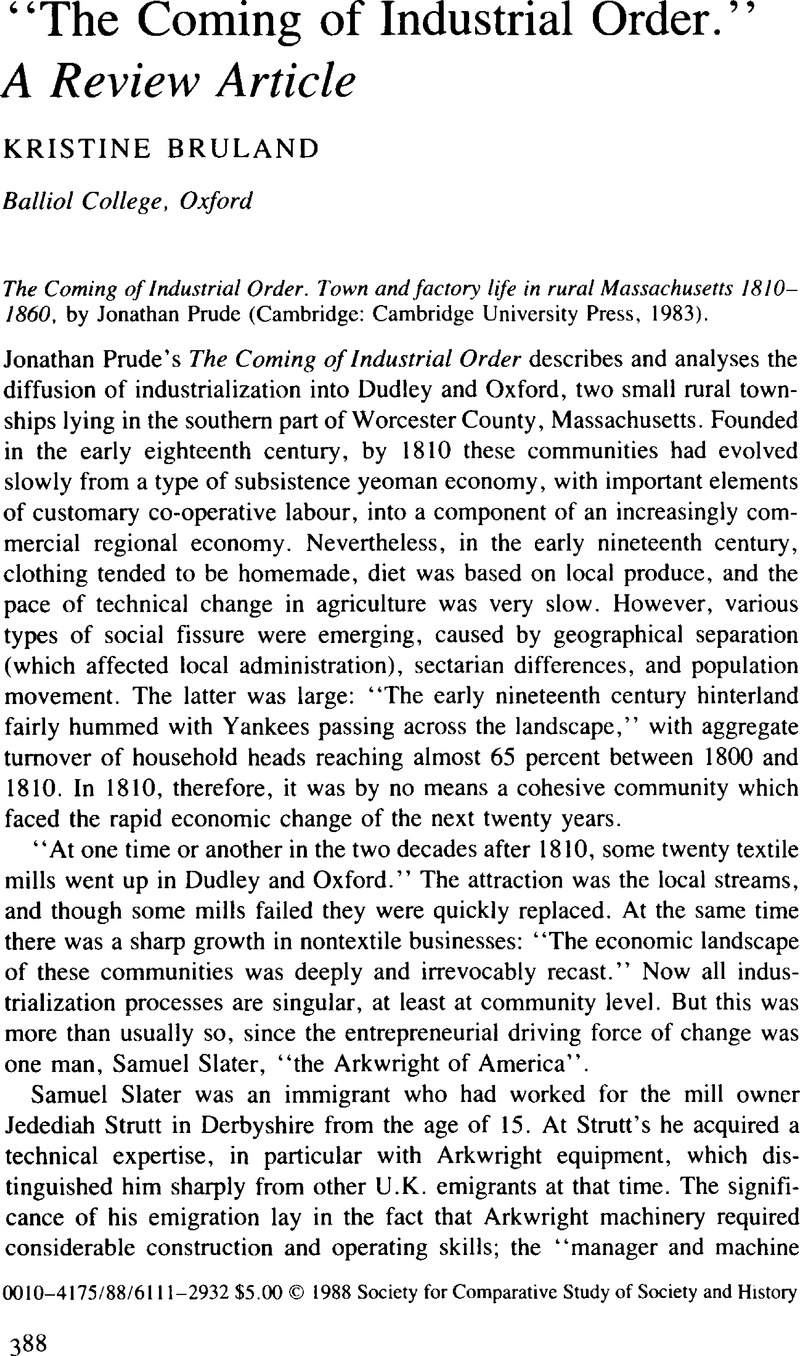No CrossRef data available.
Article contents
“The Coming of Industrial Order.” A Review Article
Published online by Cambridge University Press: 03 June 2009
Abstract

- Type
- CSSH Discussion
- Information
- Copyright
- Copyright © Society for the Comparative Study of Society and History 1988
References
1 Jeremy, D. J., Transatlantic Industrial Revolution. The Diffusion of Textile Technologies Between Britain and America, 1790–1830s, (Oxford: Blackwell, 1981), 76.Google Scholar
2 Ibid.
3 Ibid., 90.
4 Prude, J., The Coming of Industrial Order, (Cambridge: Cambridge University Press, 1983), 50.Google Scholar
5 Ibid., 53.
6 Ibid., 60.
7 Ibid., 100.
8 Ibid., 108.
9 Ibid., 110.
10 Ibid., 144.
11 Ibid., 190.
12 Ibid., 243.
13 For example, Skipp, V., Crisis and Development (Cambridge: Cambridge University Press, 1978), which examines the growth of craft occupations in five parishes near Birmingham in the late sixteenth and early seventeenth centuries.CrossRefGoogle Scholar
14 See, e.g., Berend, I. T. and Ranki, G., The European Periphery and Industrialization 1780–1914 (Cambridge: Cambridge University Press, 1982).Google Scholar More successful is Lazonick, William, “The Subjection of Labor to Capital,” Review of Radical Political Economy, (Spring) 1978.Google Scholar
15 Prude, op. cit., p. xi.
16 Kisch, H., “The textile industries in Silesia and the Rhineland: a comparative study in industrialization (with a postcriptum),” in Kriedte, P., et al., Industrialization Before Industrialization (Cambridge: Cambridge University Press, 1981), 194.Google Scholar
17 Back in Derbyshire, for example, the Strutt records from Belper and Milford indicate an annual turnover of about 16 percent between 1805 and 1812. See Fitton, R. S. and Wadsworth, A. P., The Strutts and the Arkwrights 1758–1830, (Manchester: Manchester University Press, 1958), ch. 9.Google Scholar
18 See, e.g., Schön, Lennart, “British Competition and Domestic Change: Textiles in Sweden 1820–1870,” Economy and History, XXIII:1, 61–76.Google Scholar


